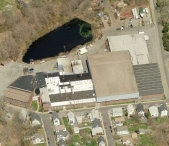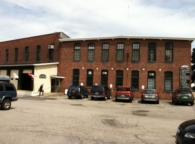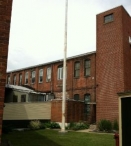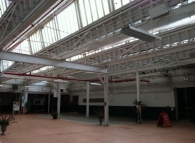Mill Record Stonington
RETURN TO ‘FIND MILLS’Disclaimer: Content for these properties was compiled in 2014-2017 from a variety of sources and is subject to change. Updates are occasionally made under Property Information, however the Connecticut Trust for Historic Preservation (dba Preservation Connecticut) makes no representation or warranty that the information is complete or up-to-date.
- Complex Name (Common)
- American Velvet Company
- Complex Name (Historic)
-
- American Velvet Company
- Address or Location
- 22 Bayview Avenue, Stonington
- County
- New London
- Historic Designation
- Associated Mill Community
- n/a
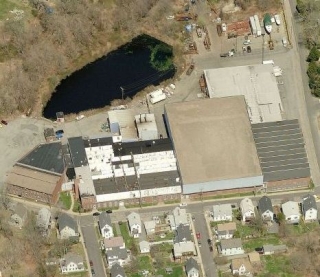 What can you do at this mill?
What can you do at this mill?
- Historic Information
Companies Associated w/Complex
- American Velvet Co. 1891-1996
- Wimpfeimer and Bros. 1880s-1891
Use (Historic)
Largest Documented Workforce
n/a
Historic Narrative
In the 1880s, a velvet trade company called A. Wimpfeimer and Bros. began to produce and dye velvet fabrics in Astoria, New York. In 1891, the firm reached an agreement with the town of Stonington, whereby it would move there if a factory were built for it. The first sections of the Stonington plant were constructed about that time. Velvet produced by the company was used in a variety of applications, but most notable uses were for clothing, jewelry boxes, displays and coffin linings. The company remained strong until the 1990s and retained nearly 200 workers. It was reported by the New York Times in 1996 to be one of only two operating velvet mills in active production in the United States. In 1996, with mounting competition from overseas and southern manufactures, the president of the American Velvet Company, Jacques Wimpfeimer (the firm remained under family control) announced that the operation would be removed to Virginia within two years. At the time it was estimated that personnel cost alone was nearly twenty percent lower in Virginia than in Connecticut. Since the closing of the American Velvet Company, the buildings have been undergoing a transition into flexible and creative space that is planned to be used by artists and small businesses.
- Architectural Information
Number of Existing Buildings
Roughly nine (9) blocks.
Dates of Construction
c.1891, c.1895, c.1905, c.1910, c.1920
Architect
n/a
Builder
n/a
Building Type
n/a
Architectural Description
The westernmost building served as a store house. The southern section, which is two-stories, constructed of brick and has a slightly gabled roof, was constructed between 1901 and 1907. To the north, a five sided, two-story brick addition was added between 1912 and 1925. The storage buildings are attached to another two-story brick building with a flat roof to the east. The southern half of the building is perhaps the oldest section in the complex, constructed between 1891 and 1895. This brick-pier building served as the company office and sizing/finishing room. This building was extended to north with another brick, two-story addition built between 1895 and 1901 to accommodate growing operations. To the east of the 1895-1901 (northern) section is a one-story brick sawtooth building that was building between 1895 and 1901 as a finishing room. To the south is an older sawtooth, brick building constructed between 1891 and 1895. A sawtooth addition that was constructed for winding and weaving operations extends to the east and was constructed between 1895 and 1901. At an unknown time, a portion of the building’s sawtooth roof was removed, and a second, flat-roof story was added to a portion of the building. The flat roof continues to the north, to an addition that was built after 1943. The easternmost section of the building was also built for weaving operations. It is a one-story, brick sawtooth building that was constructed between 1907 and 1912. To the north is another post-1943 addition.
Exterior Material(s)
Structural System(s)
Roof Form
Roof Material
Power Source
Condition
Good, Fair, Deteriorated
Condition Notes
n/a
- Property Information
-
Specific Location
NWC of Bayview and Meadow Avenues
Located in Stonington Borough National Historic District (1979).
http://npgallery.nps.gov/nrhp/GetAsset?assetID=fce98cc8-d081-4b4f-99e9-12e1a18604b9Adjacent To
n/a
Exterior Visible from Public Road?
Yes
Parcel ID / Assessor Record Link
- 79-14-5 / Link →
Acreage
11.74
Use (Present)
- Sources
-
Form Completed By
Mike Forino
Date
n/a
Bibliography
- 1947 Industrial Directory of Connecticut.
- The Hartford Courant, 1891-1978.
- Sanborn Fire Insurance Maps, 1895-1943.
- Representative View(s)Click on image to view full file
